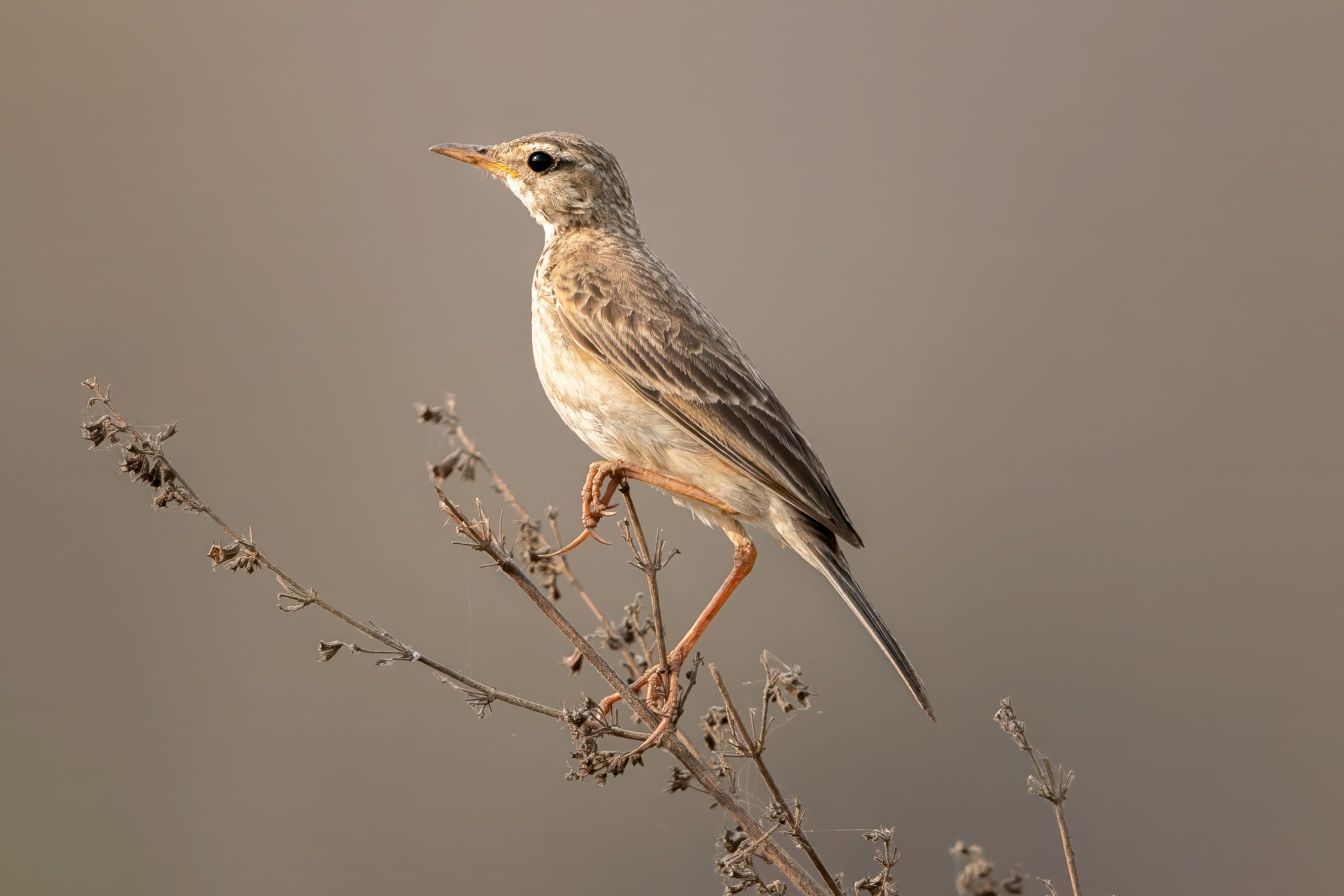Description
The meadow pipit (Anthus pratensis) is a small, inconspicuous passerine bird with a range that extends across much of Europe and into parts of Asia, favoring temperate climates. Adults typically measure between 14.5 to 15.5 cm (5.7-6.1 in) in length. They have a predominantly brown upper body with dark streaks, complemented by a pale to white underbelly, with dark streaks on their chest and flanks. These pipits have a slender bill, ideal for their insectivorous diet, and their legs and feet are often pinkish in color.
The meadow pipit is very similar to the tree pipit (Anthus trivialis), but differences in behavior and habitat preferences, as well as differences in their vocalizations can help distinguish the two. The meadow pipit prefers open landscapes and is less likely to perch in trees compared to the tree pipit, which is more often found in forested habitats and readily seen perched in trees. There are also slight differences in appearance, as the meadow pipit is slightly smaller in size and has a more slender bill. The tree pipit often shows more of a buff coloration on its chest.
Diet & habitat
Meadow pipits are adaptable birds, inhabiting a variety of open terrains including heathlands, moorlands, grasslands, and coastal areas. Their diet primarily consists of insects and small invertebrates, which they skillfully forage from the ground. During the breeding season, the diet is supplemented with a variety of seeds, catering to the nutritional needs of its offspring. Their foraging technique is methodical, involving a combination of walking and running on the ground, interspersed with brief pauses to snatch prey.
Migration
Meadow pipits exhibit partial migratory behavior, with populations in the northern parts of their range migrating southward for the winter months. This migration begins in late summer and extends into early autumn. Their wintering grounds span across southern Europe, southwestern Asia, and parts of North Africa, where they congregate in large flocks, providing a striking contrast to their solitary or paired behavior during the breeding season. Birds in Western Europe and the British Isles tend to be resident year-round.
Nesting
The breeding season for meadow pipits commences in spring, with their nesting sites concealed on the ground, often amidst dense vegetation to evade predators. The construction of the nest is a collaborative effort between mates, utilizing grasses and mosses to form a sturdy foundation for their offspring. A typical clutch comprises 2 to 5 eggs, which are incubated primarily by the female for a period of 12 to 14 days. Following hatching, both parents are involved in the feeding and care of the chicks, which fledge after approximately 14 days.
The meadow pipit is known for its role as an important host for the common cuckoo (Cuculus canorus). Cuckoos, known for their brood parasitism, often lay their eggs in the nests of meadow pipits, relying on the unsuspecting pipits to raise their young. Upon hatching, the cuckoo chick often shove the pipit eggs and chicks out of the nest, becoming the only chick to be fed by the meadow pipit parents.
Status
The meadow pipit has a wide distribution and large population size, and it is classified at least concern on the IUCN Red List. However, it has been declining in numbers in many areas across its range, possibly due to increased agriculture, which has led to fewer insects and less food for chicks during breeding season, and climate change.












